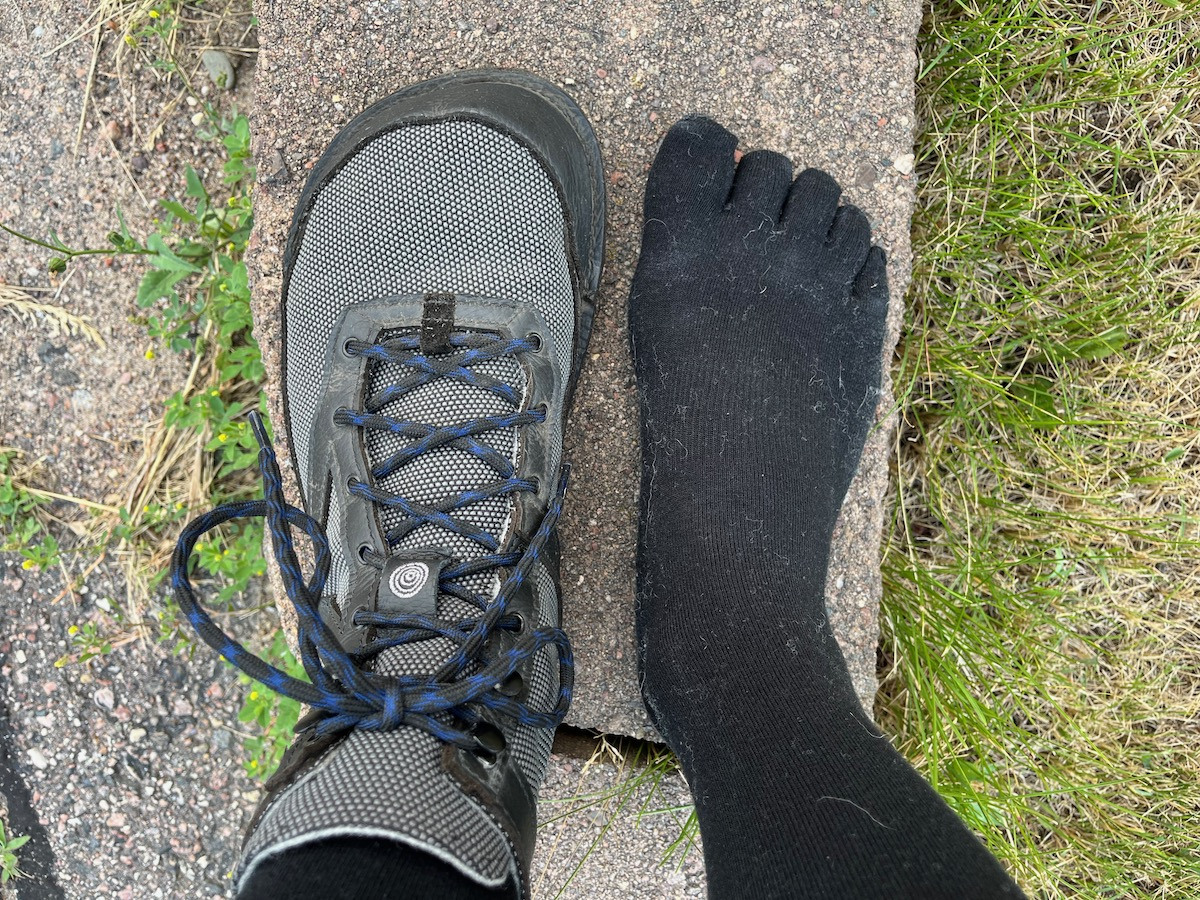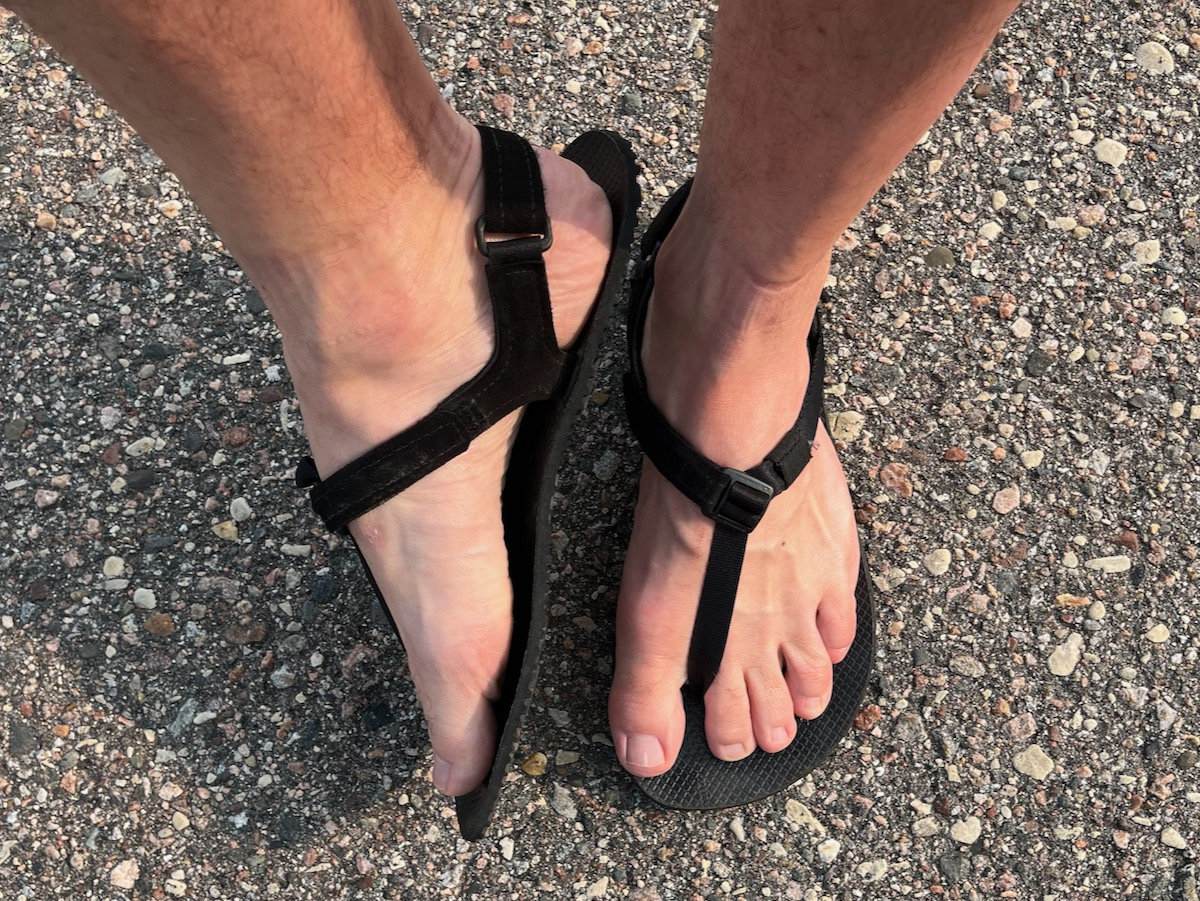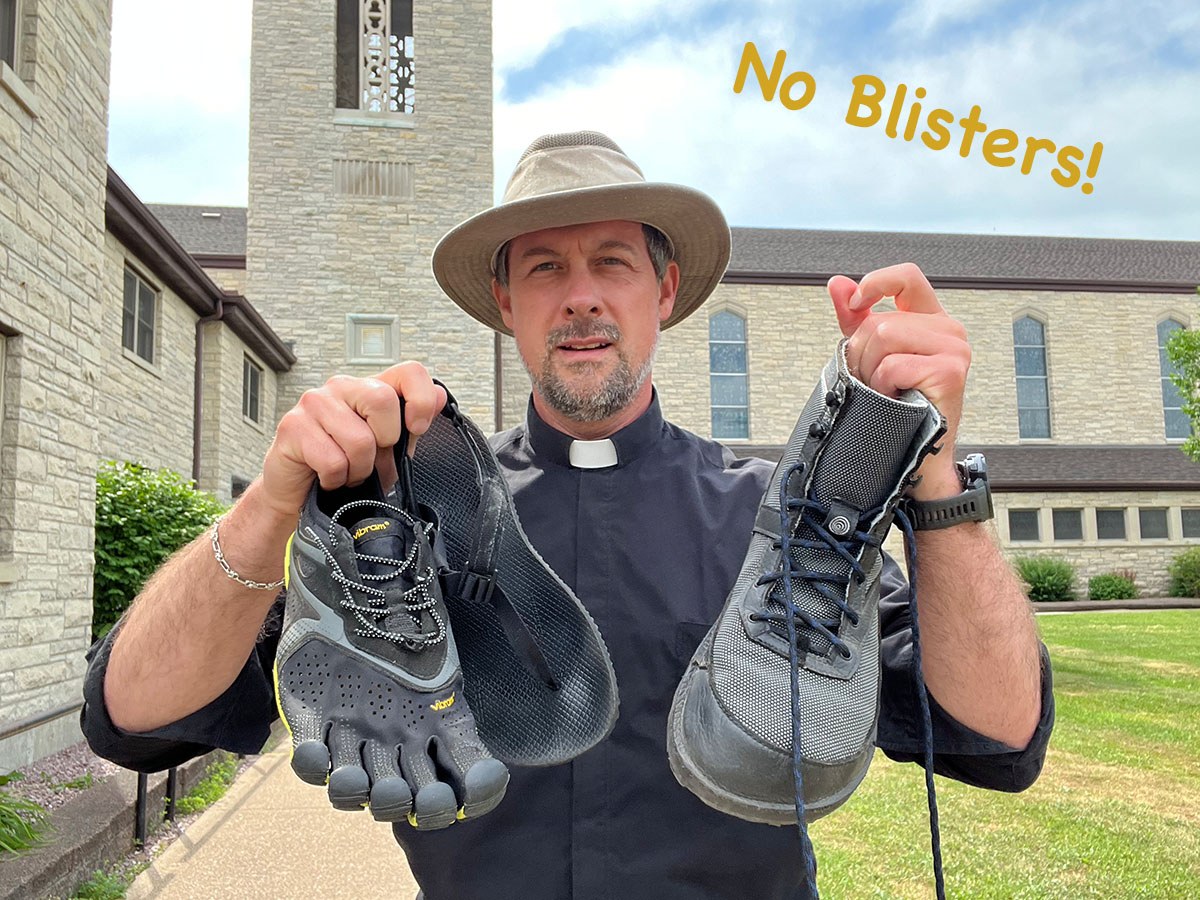Walking a pilgrimage is a mental and spiritual challenge, but it is also a physical challenge. Walking many miles day after day is particularly hard on the feet. My first Camino, a buddy and I walked over 100km in 6 days with no blisters. Every pilgrimage after that, I got at least one blister. This year I walked 56 miles and am happy to report no blisters!
Let me show you my shoes and then the philosophy behind those choices. My main walking shoes were the Switchback Boot from Softstar shoes. They are thick by minimalist standards with a 10mm stack heigh, but they remain light and flexible and weigh just 420g per shoe. I paired them with the ToeToe's Outdoor Wool High-crew socks. The shoes "shed" wool from the liner, which is why the sock looks "hairy." They have a wide toe box and are also "zero-drop", meaning your heel does not sit any higher than the rest of your foot.

The Softstars are about 15mm wider than my old Keens (see below), but they look a lot wider because of the shape of the toe. My only beef with the Softstars is they don't really seem waterproof. They got soaking wet in the all-day rain on Tuesday. They stay warm even when wet, thanks to the wool liner, so I didn't realize how wet my feet were until we stopped for the night. I tried to dry them in front of a fan and they were mostly dry by morning. They would stay a little damp in the toes until I finally got home and left them on a boot dryer all night. Other than the waterproof question, these were a great choice and I will wear them next year.

I had originally planned to walk the whole week in Vibram Fivefingers V-Run toe shoes. I tried them out on the Walk to Mary. It was cold and rainy and my feet went numb. I still managed 11 miles and no blisters, so I brought them anyway as a backup pair. I walked just Wednesday (12.8 miles) in these, and the ball of my left foot was very sore and tired after. My feet recovered surprisingly well by the next morning, but the cool weather the next two days prevented me from trying them again. My one issue was that the laces came apart. I filed a warranty claim and they refunded my money; I guess the laces are not user-replaceable. I didn't have to send the shoes back so I ordered aftermarket laces from Yankz. I would NOT recommend most people try a walking pilgrimage in these, but they make great training shoes to prep for pilgrimage.


My last pair of shoes was the Shamma Warriors sandals. They are sold as running sandals. On the pilgrimage itself, I used them as my evening shoes to give my feet a chance to breathe. These are great every day sandals that can handle being immersed in water. They have replaced my Chacos as my everyday sandal of choice. They are very thin and flexible. You could train in these and they would help toughen up your feet.

What made the difference?
I think it came down to three things. I had been getting blisters mostly between my toes, not in the really crucial areas like the heel or the ball of my foot. Toe socks helped isolate each toe, and wider shoes gave my toes more room to spread out. Most of us have gotten used to our feet being crammed into shoes that are too narrow, and don't respect the true shape of our feet. Look for shoes that advertise a "wide toe box" or "foot-shaped."
Thirdly, I have been testing out more of a minimalist approach to footwear. This trend was kicked off by the 2009 by the book Born to Run by Christopher McDougall. He argues that the foot is actually really good at doing the job it was designed to do. It just needs a little protection, some help with traction, and some help staying warm. It also needs a lot of exercise. If you give it to much "help," in the form of excessively comfortable, stiff, or "supportive" shoes, the foot fails to get enough exercise, which leaves it weak and prone to injury.
As you can imagine, minimalist shoes are controversial with podiatrists. I won't go into the reasons I got stared down this path, but I have been spending more time walking barefoot, using minimalist shoes, and also exercising my hip abductors. My feet themselves feel stronger and I feel more stable. My posture has improved significantly. I think the extra "toughness" of my feet contributed to not getting blisters. Consider these three questions:
- Are your shoes wide enough, or the right size/shape for your foot and toes?
- Do you have the right socks?
- Have your feet themselves been getting training and exercise?
